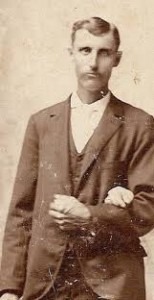
Albert Dietrich
Johannes Brahms was an uncompromising perfectionist. He destroyed a good number of manuscripts he used for working out compositional ideas, including sketches and rejected or incomplete pieces. And that included a dozen large-scale works! He submitted his compositions for advice from musicians and amateurs he most respected, and in the end ignored most of it. Brahms said that prior to publishing his first string quartet, he had already composed 20 string quartets that have now disappeared. Particularly in his youth, Brahms was prolific in burning his early works. The manuscript of the Sonata for Piano No. 1, published as Opus 1, is titled “Sonata No. 4.” However, the path of destructive self-censorship continued well into his maturity. In 1880, he played two new trios for Clara Schumann. She preferred the one in E-flat major, so Brahms burned it! Scholars have suggested that only about one third of Brahms’s compositional output has survived!
So everybody got hugely excited when the musicologist Ernst Bücken of Cologne University found a manuscript—in the hand of an unknown copyist—among the papers of Dr. Erich Prieger. Prieger was a renowned music collector in Bonn, and we do know that Brahms spent part of the summer of 1853 in that city. Although the title page was missing, Bücken relied on internal evidence to suggest that the unknown Trio was the work of Brahms.
Johannes Brahms: Piano Trio in A Major

Johannes Brahms

The only composer I’ve heard who wrote works that could be mistaken for Brahms is Heinrich von Herzogenberg, such as his piano quintet.
I spent one year of my life listening to Brahms’s chamber music. I’ve been playing his piano music for 55 years. It’s Brahms!!
Whether it’s Brahms or not it is a thing of beauty, a gift to humanity. I have the CD’s from the Beaux Arts Trio, and have for years listened to this with the undisputed Brahms trios. It fits right in. Sometimes it’s almost my favorite.
As so many other commenters have pointed out, on stylistic evidence alone, Brahms is the most probable composer. There are other factors as well.
Note how often Brahms writes his first and second examples of a genre as a pair: the first and second piano sonatas, piano quartets, string quartets. If you know the 1854 version of the B major trio (utterly different from the familiar version, a late and very far-reaching recasting), the A major work breathes the same air. They could have been a pair, but…? The B major work is much larger and (in 1854) really overly ambitious; the A major is shorter and tighter; they don’t look right as a pair. It is also possible that Brahms may have been dissatisfied with the finale of the A major trio, which snags its toe a little bit getting out of the gate; or with the few spots that recall Schumann. We know all too well that Brahms typically destroyed works that he felt were not up to standard; this would be a unique exception. Did he think it was just close enough to be worth fixing, later, but later never came? How and when did the original MS pass out of Brahms’s possession?
So if it is Brahms, it is 1854, and here comes the real question: not how could, but why would anyone imitate Brahms in 1854? Many and many people tried to imitate him later, when he had become famous, but mostly very badly. (Someone has mentioned Herzogenberg, who could, but actually rather seldom did, channel Brahms to the life — especially his trio for oboe, horn, and piano.)
As to the speculation surrounding Albert Dietrich, go look at Dietrich’s C-minor trio (Op. 9, published 1855) on IMSLP. It is Schumann, and not very good Schumann. It does not recall any Brahms.
I know Dietrich’s music rather well, being familiar with his violin concerto, cello concerto, symphony, and his two piano trios, but this trio sounds more like Brahms than Dietrich. And why would Dietrich not publish what would have been one of his best works, superior to either of his published trios? Any composer of the day would have been proud to have written this…except Brahms, of course. So, I still think this is one those rare desk drawer works that Brahms failed to euthanize, as he did so many others.